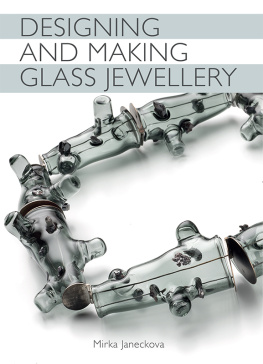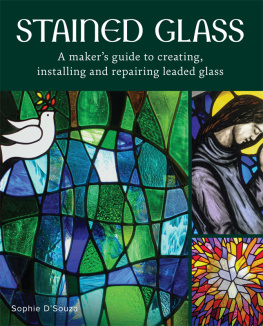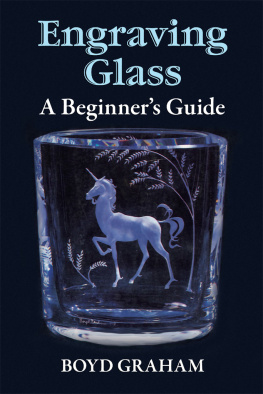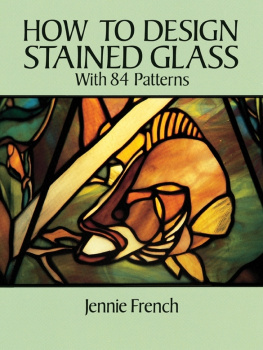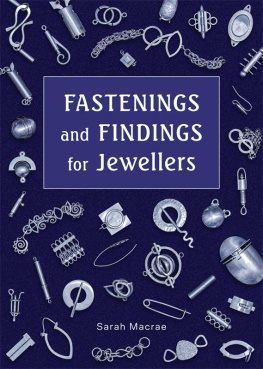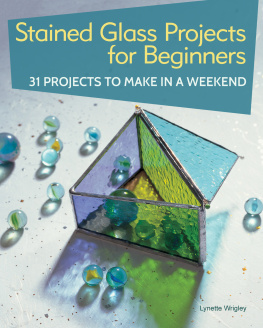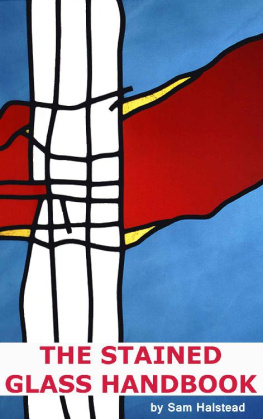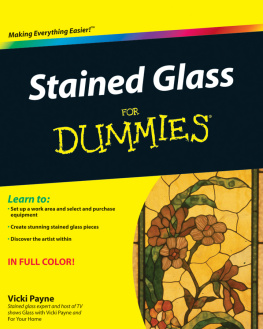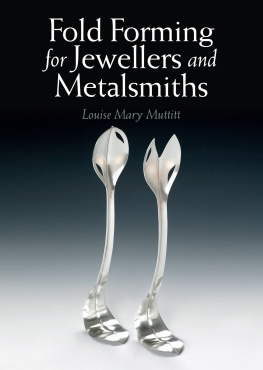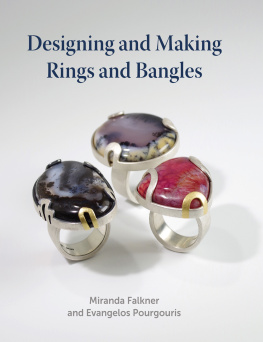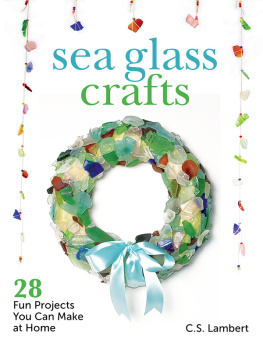Page List
DESIGNING
AND MAKING
GLASS JEWELLERY
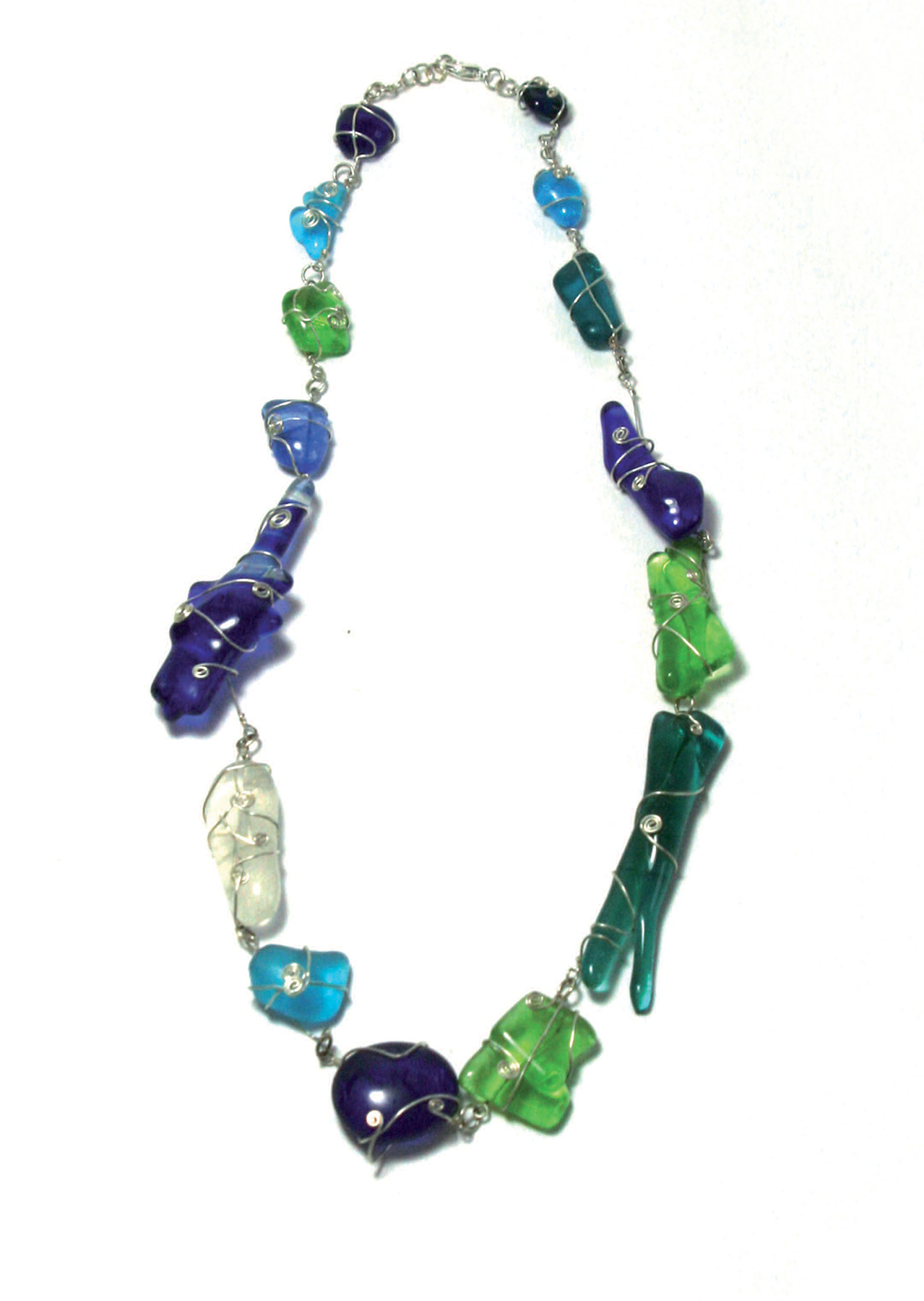
DESIGNING
AND MAKING
GLASS JEWELLERY
Mirka Janeckova

First published in 2019 by
The Crowood Press Ltd
Ramsbury, Marlborough
Wiltshire SN8 2HR
www.crowood.com
This e-book first published in 2019
Mirka Janekov 2019
All rights reserved. This e-book is copyright material and must not be copied, reproduced, transferred, distributed, leased, licensed or publicly performed or used in any way except as specifically permitted in writing by the publishers, as allowed under the terms and conditions under which it was purchased or as strictly permitted by applicable copyright law. Any unauthorised distribution or use of this text may be a direct infringement of the authors and publishers rights, and those responsible may be liable in law accordingly.
British Library Cataloguing-in-Publication Data
A catalogue record for this book is available from the British Library.
ISBN 978 1 78500 678 4
Photographs by Mirka Janekov except where specified otherwise
Frontispiece:Glass Drops necklace, Mirka Janekov.
Acknowledgements
This book couldnt have been brought to life without the help of many people. I want to say a big thank you to all the wonderful artists who allowed me to use their images in this book it would have been a boring book without you! Big thanks to my colleague David Mola for his specialist advice and huge help, especially with explaining copper foil technique. I am grateful to all the people from whom I learned about glass over the years Petra Hamplov, Martin Rosol, Kristna Fendrychov, and the teachers and technicians at RCAs Jewellery & Metals and Glass & Ceramics Departments and the Glass & Ceramic Department at the University of Wolverhampton where I was an Artist in Residence at the time of writing this book. I am very grateful for the awards from the Association of Contemporary Jewellery and the Edinburgh Council, which meant I was able to have dedicated time to explore and write outside my normal working and teaching schedule. Thanks also go to my studio buddy, photographer Brenda Rosette, for helping me with the images.
And special thanks go to all the family and friends who were so patient with me during the writing process.
Photos and sketches in this book are by the author, unless otherwise specified.
PREFACE
I am a jeweller originally from Czech Republic but now living in Edinburgh, Scotland. When I started my training as a jeweller I was fascinated by the properties of the metals involved and wanted to learn as much as I could about these, but later I wanted to add some different elements to my work. The first material I explored was porcelain: this is an amazing material with huge sculptural possibilities but what I was missing was transparency. I wanted to use material which could transmit the light. I was considering using plastics but they just didnt feel satisfying and precious enough. So my next choice was glass.
I started to work with glass in jewellery during my MA studies at the Royal College of Art in London. At that point I didnt know anything about how to work with glass so I searched for guidance in the literature. All the books I was able to find at that time were very technical, not that suitable for jewellery, and it looked as if a lot of strange, expensive equipment was needed to do even basic things. It scared me a bit but eventually I learned how to work with glass with the help of many people and with much of my own experimentation. And I fell in love with this beautiful material. A few years later, I thought that it would make sense to write a book which would help other people to enter the amazing world of glass jewellery and which would be easy to follow and understand the book which I needed as a student years ago. This is it and I hope you will enjoy it!
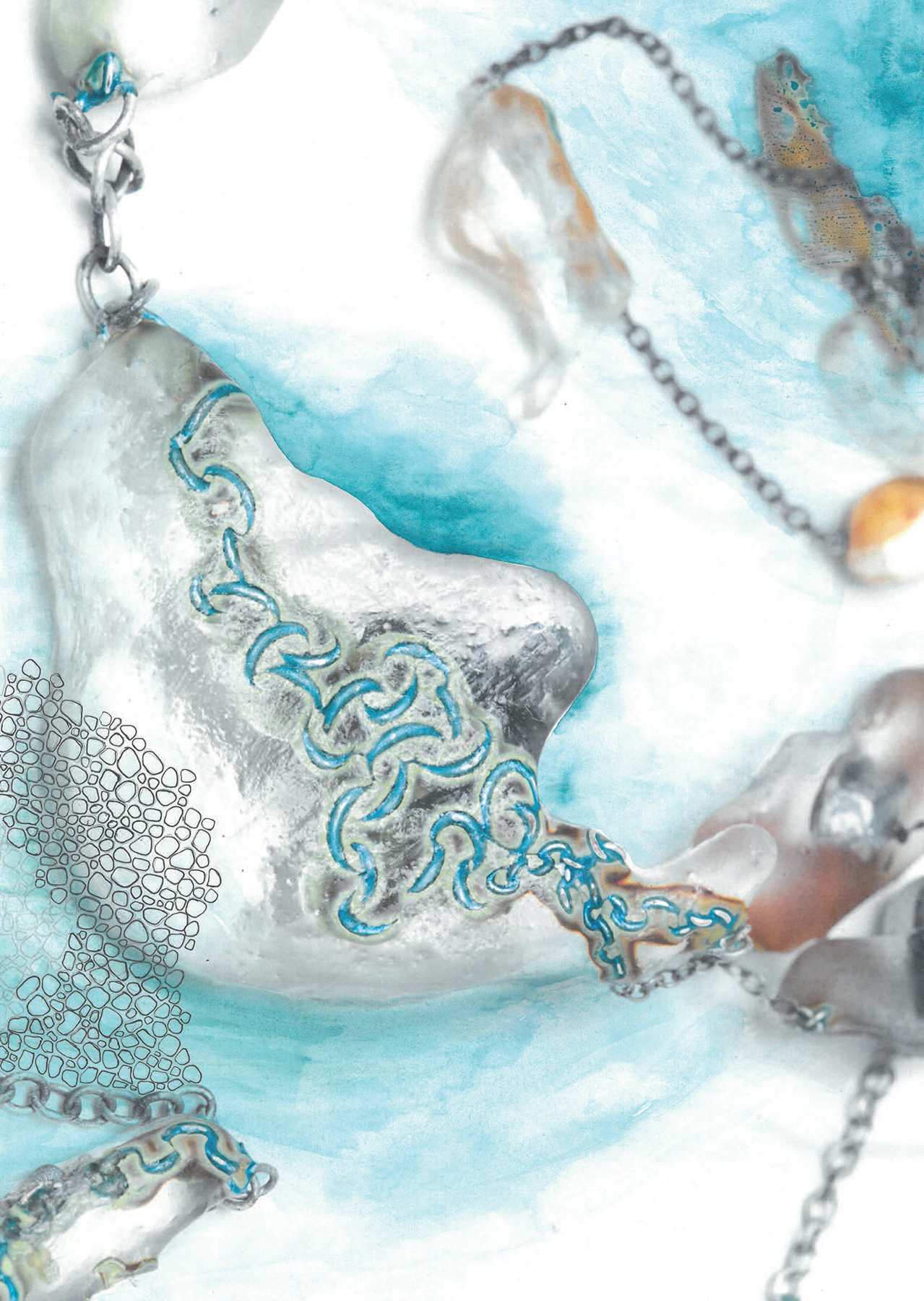
Subterranean Rivers, Mirka Janekov. One of my first glass pieces from when I was studying at the Royal College of Art in London: I was experimenting with ways of casting findings such as chains directly in glass.
INTRODUCTION
Glass is a fascinating material which has been part of our material culture for a very long time. It is one of the earliest man-made materials: some sources say that the use of glass by humans dates back over 5,500 years. The earliest glass items found were small objects such as beads, amulets and statuettes.
From a jewellery perspective it is very interesting that early makers were using glass to mimic precious and semi-precious stones such as lapis lazuli or turquoise, or even precious metals such as gold. However, at that time, glass was not seen as a cheap substitute but as a material of equal value to the real gemstones. In ancient Egypt the glass was poetically called the stone that flows and was seen as a luxury material, evidenced by the fact that most early glass was found in places such as temples, palaces or richly equipped tombs.
Later, the knowledge of glass forming spread from the ancient kingdoms of what is now called the Middle East to the Roman Empire and then to other parts of Europe Italy, Germany, Bohemia and as far as Britain and parts of Asia. The use of glass in jewellery has continued uninterrupted until the modern day but has flourished particularly in specific places.
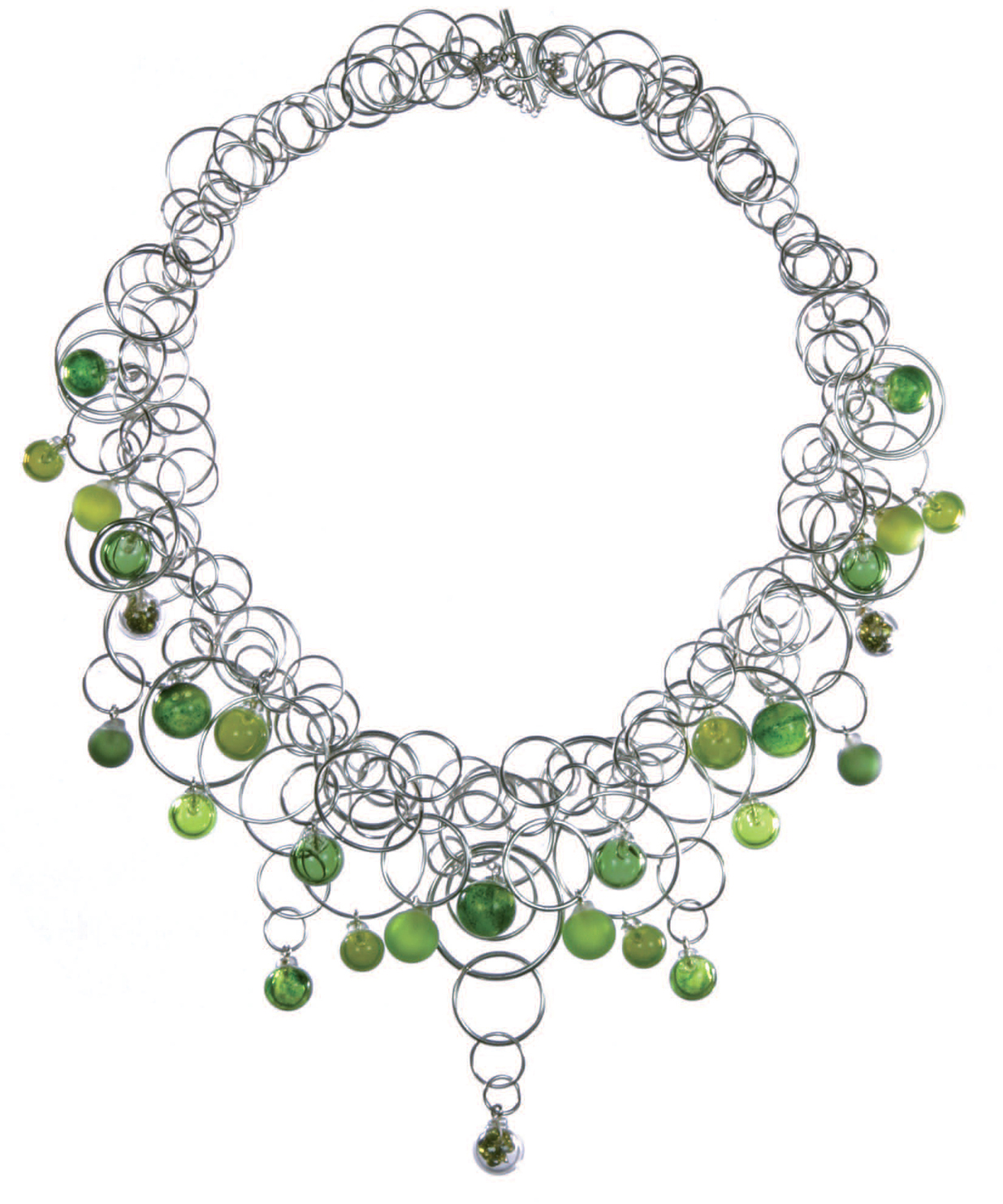
Aventurine Green Glass Bubble Multilink Silver Neckpiece, Charlotte Verity. (Photo: Charlotte Verity)
One famous example is the Italian island of Murano which has been especially well known for its lampworking advancements (among other glassmaking skills) since the thirteenth century CE. The Venetians grouped all their glass manufacture on one island to keep the rest of the city from the potential fire risk but also to protect their advanced glass technology from being stolen and copied.
Another glass jewellery centre in Europe is Northern Bohemia (now Czech Republic), well known for manufacturing glass jewellery and beads from about the eighth century CE. Small seed beads from Bohemian factories have been used in tribal costumes as far away as Africa and North America.
Glass technology has continuously developed and invented; for example, lead glass with its brilliant shine was developed in seventeenth-century Britain. With industrialization in the nineteenth century, glass become more affordable and was not seen as a luxury item any more. Its manufacture spread over the whole of Europe, America and further.
In the twentieth century we can see the renaissance of hand making in the rise of the Studio Craft Movement. Many artist jewellers started to employ glass in their work once again. In this book I will be introducing the contemporary generation of jewellers who are using glass in their work to show the variety of approaches. It is exciting and satisfying to see that glass has been an inspiring material for jewellery artists and craftsmen for thousands of years and continues to be so.

